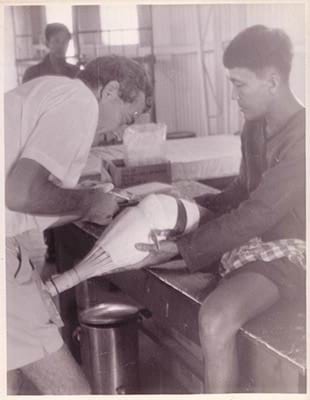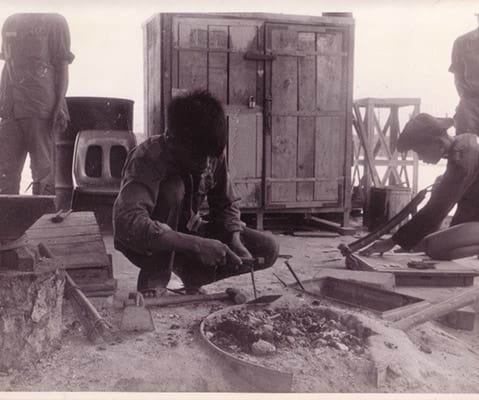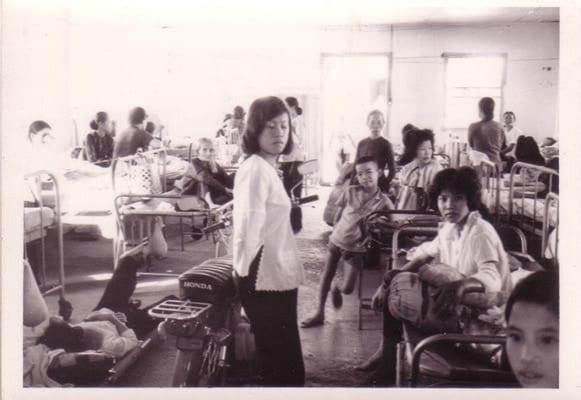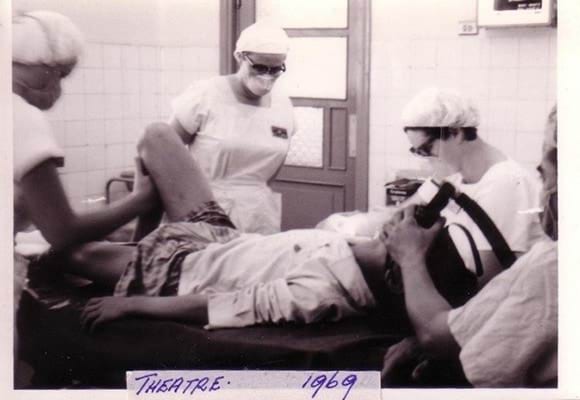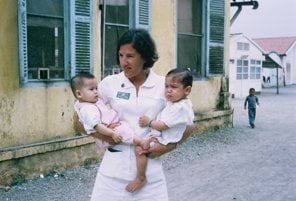
- Conflict:
- Vietnam War (1962-73)
- Service:
- Nursing services
During the conflicts and hostilities in Vietnam (1962–75), the Australian Government sent civilian surgical and medical teams into South Vietnam to care for the South Vietnamese people and the large refugee population from North Vietnam. Not only were they required to care for civilians, but also members of South Vietnamese local forces, wounded Viet Cong and North Vietnamese personnel who were brought to Bien Hoa Province Hospital by the Australian, American or South Vietnamese military.
There were an estimated 500 amputees in the Bien Hoa prisoner of war (POW) camp. The Red Cross had no funds available for artificial limbs for POW amputees. Our new orthopaedic surgeon, Dr Charles Shearer, stepped in for humanitarian reasons and started our artificial limbs project.
Charles: what an incredibly empathetic, fun-loving, genuine character he was. Not only was he a barrel of laughs, he had the ability to put pen to paper and describe any situation. More importantly, he was a brilliant Orthopaedic Surgeon and part of our team. He couldn’t cope with being still, or sitting around without purpose. At the end of the day he would often say ‘Helen, what can we do?’
Bien Hoa Hospital’s Chief Nurse, Mr Ba, and I were invited to visit Bien Hoa’s POW camp to meet with the South Vietnamese Commandant and his American counterpart. I happened to ask Charles to come with us for security, and to drive. (I couldn’t see myself visiting on the back of Mr. Ba’s Honda motorbike!)
In general conversation they mentioned there were many men in the Camp who were lower leg amputees. One day over a coffee Charles asked if I would help him with a bit of a challenge he had been thinking about. I wondered what was coming. He stated:
Why shouldn’t these men have some assistance? They were the enemy, I know, but surely someone should help them!
Charles’ plan was devised. My job was to help but mainly do a bit of scrounging as a ‘gopher,’ and I was getting quite good at that!
Some of the things he needed were: old tyre tubes to make straps, Plaster of Paris for stump attachment, scrap metal and bolts for attachments and bamboo and pieces of wood to carve for base rockers. Once we procured the necessary supplies, Charles was ready to start this project.
The POW Camp Military staff, and several of the prisoners were eager to assist in making the spare parts needed. They cut the rubber for straps, heated metal over coals to enable it to bend and carved the rocker foot from the wood.
This was the start of the Artificial Limb Project for Bien Hoa’s POWs.
Charles mastered his skills by moulding, bending and adjusting these very basic limbs—the alternative prosthesis. I was the lackey: ‘soak the bamboo, hold this, get this, get that, cut this and try that,’ I was told.
As Charles tried the artificial limb on the amputee’s stump, the recipient was so excited he could hardly wait until it was strapped on to take his first step. And they did, off they would go, smiling and laughing. There was no physio to get the wasted muscles working around the stump area—just sheer grit and determination. Like a miracle, they had two legs again!
We were at the POW Camp one evening working on the limb project when the sirens started screaming. This piercing noise shattered the twilight. It was not a curfew time. We could have been in all sorts of trouble. The hairs on the back of the neck stood up but we were assured we would be quite safe. Next thing, across the field behind the barbed wire fence of the prison was a young man, presumably a member of the Viet Cong, fleeing for his life to escape. Then, ‘rat-a-tat’ and that was the end. Silence. We were quickly escorted by the Armed Military Police, guns in readiness, back to the safety of our house. We lived with such a false sense of security: never thought anything would happen to us.
I watched the protest marches prior to going to Vietnam. I had no idea about war and what I was going in to. I would read and hear about moratorium protests in Melbourne whilst we were in Bien Hoa. I wondered if this opposition was to the Vietnam War, to our soldiers who were fighting or mourning the loss—of whom? Why did I go to South Vietnam. What did I expect to find? I think it was the challenge, to see for myself, and with the hope I could help in some small way.
It was hot, it was different, it was dirty, it was horrifying and it was exhausting, but also very humbling and so happy at times. I was very lucky to have been given this opportunity to work with such devoted and caring people, both Australian and Vietnamese and journey through this incredible experience.
All images courtesy of Helen Taplin
Author:
Helen Taplin (née Perrin) served as a nurse with a civilian surgical team in Bien Hoa, South Vietnam, in 1969–70. While there she became involved in a project to help prisoners of war make artificial limbs.
Updated
